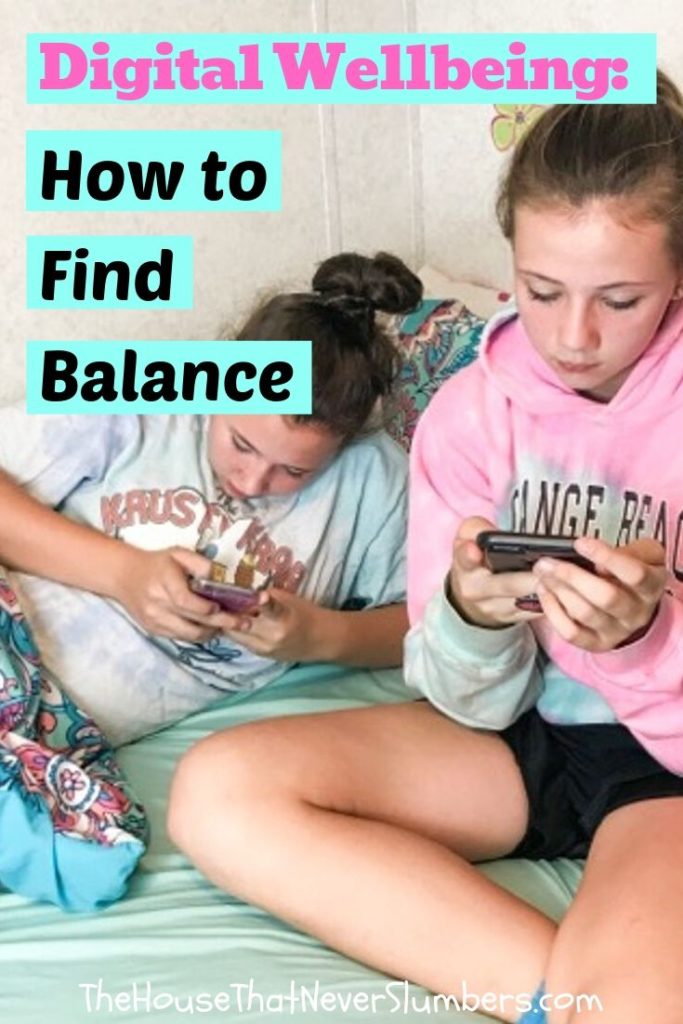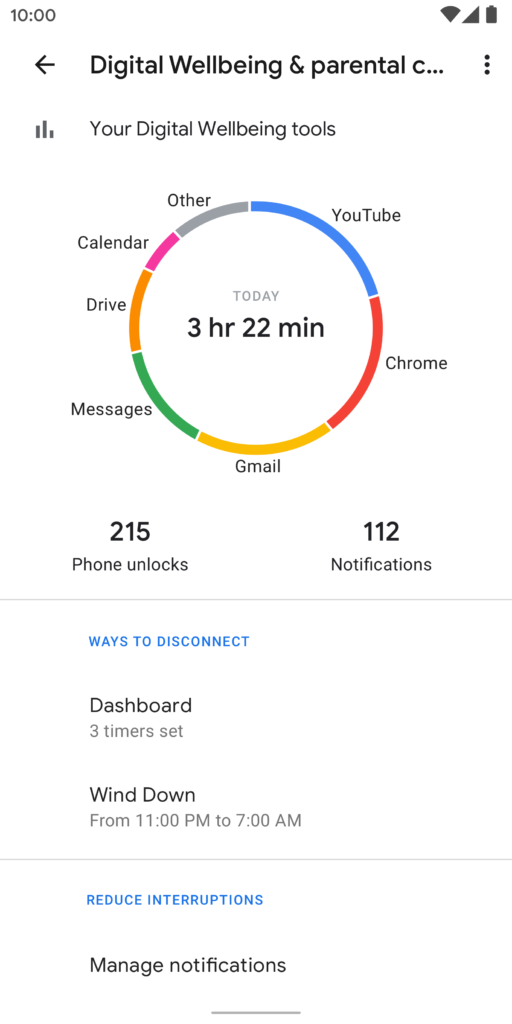Digital wellbeing wasn’t a topic that even crossed the minds of my parents. However, just because technology has changed many aspects of the way we live, it doesn’t mean our own children can’t achieve a healthy balance between their online and offline lives.
*This post was sponsored by Google in partnership with the Forward Influence Network. All thoughts and opinions are my own.
Google’s core mission is to develop helpful products that improve our lives, but we all know technology and phones can sometimes distract us from what matters most. As a leader in digital products, Google feels a strong responsibility to help families maintain a healthy balance with technology.
Google believes that technology should play a helpful role in our lives and our family’s lives and recognizes that this isn’t always the case. Sometimes parents struggle to manage their child’s screen time. Sometimes comments on social media go negative. Google wants to open the dialogue within families on these sometimes challenging topics.
Pin this!

Google has created digital wellbeing tools and resources to help families in this regard. The Family Link app allows parents to manage various aspects of their child’s device usage. Google has also partnered with FOSI, an international, nonprofit organization that works to make the online world safer for kids, to bring us the Family Guide. This framework helps parents discuss digital wellbeing topics with their children to discover areas that might need attention. You can find these tools at wellbeing.google.
Family Link App
The Family Link app is a service provided by Google that allows parents to monitor their child’s activity. With Family Link parents can do the following and more:
- approve the child’s downloads and purchases
- set screen time limits
- change content filtering levels
- see the location of the child’s signed-in devices

Family Guide on Digital Wellbeing
While my siblings and I were growing up, we lived in a world where telephones were firmly attached to the wall. Our phone was a rotary dial through all my school years. The computers we used in the classroom did barely more than simple word processing and had only a fraction of the memory I now have on my cell phone.
We now have an entire digital world at our fingertips. It’s new territory for all of us, and we’re all just doing the best we can as parents to skillfully navigate each new advancement while striking a good balance between overuse and proper usage.
Google’s Family Guide on digital wellbeing helps parents have important discussions with their children by asking thoughtful questions on these topics. There are discussion points, expert tips, and even recommended activities to help the whole family develop healthy tech habits, together.
We sat down with our 13-year-old and 15-year-old daughters one evening to do just that. I wanted to share a bit of insight from the two parts of the Family Guide that sparked the most conversation from my girls.
You can find the Family Guide and other helpful resources to work through with your family at wellbeing.google.
Family Conversation: Use Social Media Meaningfully and Responsibly
Using the Google Family Guide, my husband and I had a lively discussion with our two younger daughters about the positives and negatives of social media. I was pleasantly surprised by their perceptive input.

Both girls had a nice grasp of the advantages and disadvantages of social media. They know it can be used to keep in touch with friends and relatives you don’t see often. We talked about the ways our church and school use social media to disperse important information about events. The girls think it can be a useful tool in encouraging others or giving compliments.
They also see the downside. Although they realize there is the potential for outright bullying, they seemed more concerned about the more subtle ways people harm others on social media. Subtweeting, vague-booking, and adding tiny jabs at others were more concerning practices to my girls.
They believe the subtle negativity is more hurtful than outright insults in most cases because it can’t be proven, but “everybody knows” who it was meant to harm.
They both understood the “fear of missing out” mentioned in the guide. They know social media can cause some people to constantly compare themselves to others.
My youngest daughter mentioned that some friends get upset when they see another friend hanging out with someone else on social media. Both my girls think that’s a little silly because you can be friends with lots of different people, and no one has exclusive rights, but they realize some girls intentionally post Snaps when they are together to make other friends who might think they should have been included jealous.
My 15-year-old pointed out that you shouldn’t have to NEVER post about anything fun you’re doing with friends just because it might offend someone else, but if you are posting on purpose just to make another person jealous, that is definitely wrong and hurtful.
My youngest added that sometimes when girls compliment one person, it’s really meant to hurt another person, and that is the wrong use of social media too.
We talked a little about VSCO girls, and the way social media makes people think they have to stay up with the latest trends which can lead to poor financial decisions. My youngest thinks moms who post “perfectly clean, fancy Pinterest homes are the VSCO girls of adults.”
Unfortunately, both my girls feel adults (specifically, moms) are much worse about the negative use of social media than children. They think moms are more likely to engage in catty posts going back and forth at each other in vague, cryptic terms than kids.
They also think moms are more likely to post about fun things they are doing with the intention of making others feel left out or “less than.” Ouch! We can probably all do better than that, moms. I’m going to need my teenage daughters to preview all my status updates from now on to see if I make it through their filter.
Neither of the girls believes they personally overuse social media. They have athletic practices most days and then need to take care of their animals. They don’t have time to “only sit around on our phones” even if they might want to do that some days.
Family Conversation: Make Gaming a Positive Experience
We also used Google’s Family Guide to discuss the positives and negatives of gaming. They know spending too much time “on Fortnite” can be a problem for some people. They also mentioned the very foul language used by very young children on games like Fortnite.
But we also discussed the way our family has always played video games together. It’s a fun experience for the whole family. Games like Mario Bros. can be enjoyed by the little cousins and the big cousins at the same time. When my brother’s family lived in Texas for two years, my kids could play video games with his kids and use the headsets to talk to one another almost like they were in the same room playing.
Our family doesn’t just play video games. Our kids play all types of sports together. They love Euchre and board games and get wrapped up in some pretty wild games of pool and ping pong in the basement.
Though we rarely plan a family game night, spontaneous game nights happen at least weekly if not more often. The Family Guide activity for this topic is a planned family game night. My daughters are insisting we must buy the latest Super Mario Brothers Deluxe if we want our family game night to be a success. I think they need to consider their earlier revelation about social media causing people to think they must purchase the latest trendy item, right?!
New York Times Special Feature on Digital Wellbeing
Portions of the Family Guide will be published in today’s (Sunday, September 29, 2019) issue of The New York Times. You can pick up a copy to see a print version of this helpful guide for families who want to balance their digital usage and have a deeper understanding of digital wellbeing.
A Brave New Digital World
My husband and I are not parents who see digital devices as only negative. We believe technology has value. Technology, when used properly, enriches our lives. My husband is in insurance sales, and a large portion of his work involves online communication. As a blogger, my work is primarily online as well.

Our younger two daughters are virtual hybrid students which means they take classes both online and in a brick-and-mortar school building for part of the day. Our oldest daughter is nearly finished with her Bachelor’s Degree, and about 80% of her classes have been online courses from Indiana University – East.
I’ve been a proponent of virtual education from it’s earliest stages. I’ve served on the board of one of the first virtual hybrid public schools in the nation and am currently on the school board of a public district that enrolls around 4000 virtual students from nearly every county in Indiana.
We DO NOT fear technology! We DO work hard to make sure it remains in its proper place in our lives.
Digital technology opens so many doors for so many people. Digital devices are helpful tools which can be harnessed for good when all of us work together to achieve a healthy balance in our digital lives.
With Google as our partner in this journey, we can all feel empowered to think differently about how technology fits into the day-to-day lives of our families.
To discover more tips and tools, visit wellbeing.google to find a balance with technology that feels right for the whole family.


Another option that we have just launched is Edlock – https://edlock.app/. This automatically makes it so that screen time is a reward for learning.
Thanks for the suggestion.